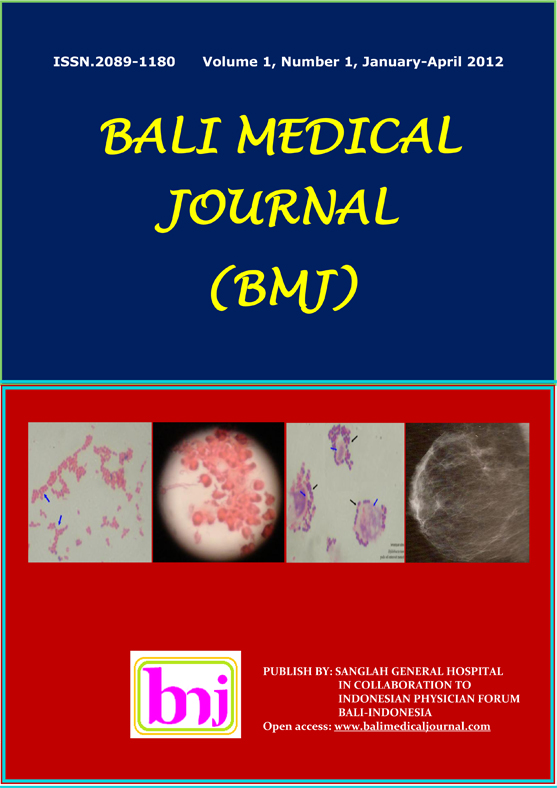Risk Factors for Neuroworsening of Moderate Head Injury Cases in Emergency Department Sanglah General Hospital Bali-Indonesia
Abstract
Objectives: To determine risk factors such as hypoxia, hypotension, age >40 years old, amount of focal lesion, low GCS upon arrival, and female associated with neuroworsening of moderate head injury cases.
Method: The study was a cohort study on 152 cases of moderate head injury admitted in Surgery Department/Udayana University Faculty of Medicine/Sanglah General Hospital from April 2010 – March 2011. The variables were analyzed using multiple logistic regression model (p<0.05).
Results: The multivariate analysis showed age group ?40 years old {OR 4,490 (CI 95%: 1,750 – 11,521) p=0,002}, male sex {OR 2,276 (CI 95%: 0,810 – 6,395) p=0,119}, initial GCS 9-12 {OR 2,905 (CI 95%: 0,097 – 24,440) p=0,048}, hypoxia {OR 13,582 (IK 95%: 4,315 – 42,750) p=0,000}, hypotension {OR 5,179 (CI 95%: 1,097 – 24,440) p=0,038}, and multiple focal lesion {OR 5,674 (CI 95%: 2,008 – 16,038) p=0,001} were risk factors for neuroworsening in moderate head injury cases. Area Under Curve value was 84.7% from the Receiver Operator Curve.
Conclusions: This study showed that hypoxia, multiple focal lesion, age ?40 years old, and hypotension were risk factors for neuroworsening in moderate injury cases.


